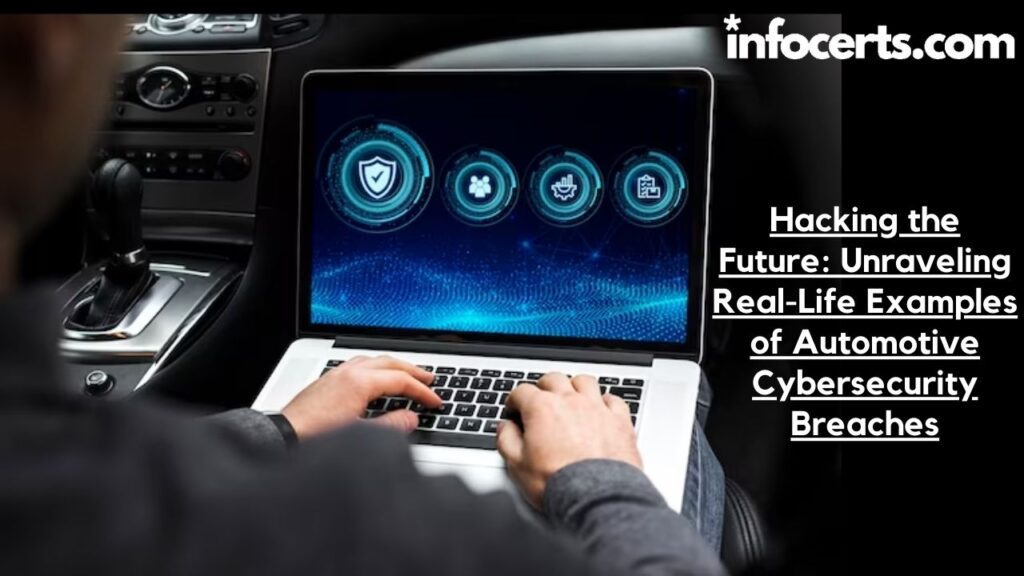Introduction:
Understanding the Vulnerabilities: The first step towards addressing Automotive Cybersecurity Breaches concerns lies in understanding the vulnerabilities prevalent in modern vehicles. Such vulnerabilities can stem from inadequate software protection, weak encryption methods, or insecure communication protocols. Cyber Attackers often exploit these weaknesses to gain unauthorized access to critical vehicle functions, raising significant safety concerns.
Analyzing Past Breaches: To comprehend the gravity of the issue, it is crucial to examine previous automotive cybersecurity breaches. High-profile incidents involving remote vehicle control, unauthorized access to infotainment systems, and even compromising safety-critical systems underscore the urgent need for robust cybersecurity measures.
Threat Modeling: Armed with insights from past breaches, creating a threat model becomes essential. This step involves identifying potential threats and understanding the various attack vectors that malicious actors may employ. By recognizing and understanding these risks, manufacturers and cybersecurity experts can build tailored defenses.
Implementing Strong Security Measures: Fortifying automotive cybersecurity necessitates implementing robust security measures. This includes deploying encryption and authentication protocols, ensuring regular software updates, and adopting secure coding practices. Additionally, conducting penetration testing and Vulnerability assessments can proactively identify and address weaknesses.
Collaboration and Information Sharing: Effective cybersecurity requires collaboration among manufacturers, researchers, and regulatory bodies. A culture of information sharing can help in the timely dissemination of knowledge about emerging threats and vulnerabilities. By working together, Stakeholders can collectively develop better cybersecurity solutions.
Continuous Monitoring and Updates: Automotive cybersecurity is an ongoing process that demands constant vigilance. Establishing systems for continuous monitoring, incident response, and timely software updates is crucial to stay ahead of evolving threats.
| Example of Automotive Cybersecurity Breach | Impact | Mitigation Measures |
| Remote Control Exploitation | Compromised | Implement Strong Authentication |
| Unauthorized Infotainment System Access | Data Exposure | Regular Software Updates |
| Safety-Critical Systems Compromise | Life-Threatening | Robust Encryption Protocols |
Conclusion: As vehicles become more connected and autonomous, ensuring robust automotive cybersecurity is of utmost importance. By examining real-life breaches and adopting a step-by-step approach to cybersecurity, the automotive industry can safeguard vehicles and passengers from potential threats. Collaboration, vigilance, and advanced security measures hold the key to a safer and more secure future for the automotive industry. Let us all work together to protect the vehicles of tomorrow from the Cyber Threats of today.
——————————————————————————————————————–
Infocerts, 5B 306 Riverside Greens, Panvel, Raigad 410206 Maharashtra, India
Contact us – https://www.infocerts.com

